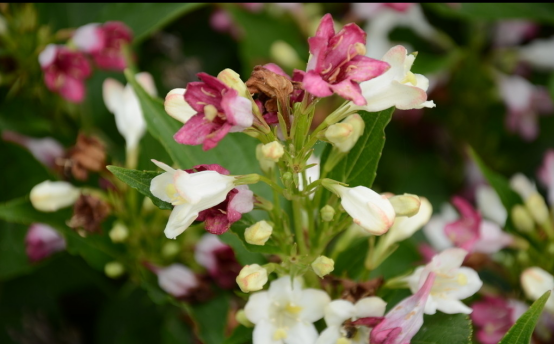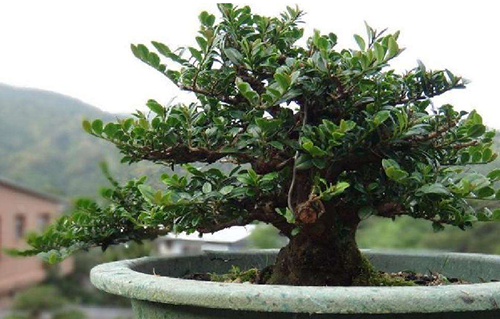Culture method of Gardenia jasminoides
1. Soil.
Lobular gardenia is usually planted in a pot for ornamental, so breeding lobular gardenia, potted soil is very important. Lobular gardenia is suitable for slightly acidic soil with good loose drainage, so rotten leaf soil or fertile peat soil can be selected for cultivation.
2. Light.
Gardenia is a sunny plant, and lobular gardenia is no exception. When cultivating lobular gardenia, the potted plants should be cultured in a sunny and ventilated place, which can ensure that the lobular gardenia can receive enough light, make the leaves greener and bloom better.
3. Watering.
The lobular gardenia likes the warm and humid environment, the lobular gardenia should pay attention to timely watering during the growth process, and the leaves can also be sprayed with water mist during the high temperature in summer, which helps the leaves to absorb water and increase their brightness. It is necessary to reduce the amount of water in winter to prevent rotting roots. At the same time, the watering time of lobular gardenia is usually during the day, and avoid watering at night.
4. Fertilizer.
The need for fertilizer in the growth process of lobular gardenia is relatively large, especially in the vigorous growth season, bean cake, sesame sauce dregs and peanut bran should be applied every half a month, which can help lobular gardenia blossom more and bloom.

After talking about the breeding methods of small gardenia, let's talk about the matters needing attention in lobular gardenia culture.
How to cultivate Gardenia jasminoides how to cultivate Gardenia gardeniae
Lobular gardenia has a very high ornamental value, can be planted in clusters or arranged on the edge of the forest, in front of the court, corner, roadside, can also be used for balcony greening, potted flowers, cut flowers or bonsai, etc., how to raise the lobular gardenia? Next, let's take a look at the breeding methods of lobular gardenia.
Growth habits of Gardenia variegata
Lobular gardenia is a typical acidic flower, which likes warm and humid climate, is not cold-resistant, has good sunshine but can not withstand strong sunlight, and is suitable for growing in loose, fertile, well-drained and lightly clayey acidic soil. It can only be used as potted flowers in greenhouse in Northeast, North China and Northwest China. Resistant to sulfur dioxide and can absorb sulfur to purify the atmosphere.
Propagation method of Gardenia jasminoides
1. Sowing: Fructus Gardeniae is mainly propagated by seeds, mostly in spring, but the seeds germinate slowly, germinate about 1 year after sowing, blossom after 3-4 years, and it is not easy to receive seeds in pot plants in the north.
2. Cuttage: from October to November in the north, it can be cut at any time from April to the Beginning of Autumn in the south, but the survival rate is the highest between summer and autumn. 2-year-old branches with healthy growth are selected for cutting. when the rooting seedlings begin to grow, they can be transplanted or put on the pot for a single plant, and can bloom after 2 years.
3. Crimping: in April, strong branches were selected from 3-year-old mother plants for striping. If there are trigeminal branches, three seedlings can be obtained at the fork at one time. Generally, it can take root after 20-30 days, can be separated from the mother plant in June, and can be planted separately or single plant in the next spring.
Culture method of lobular gardenia
1. Soil: gardenia microphylla should choose acidic basin soil with a suitable pH value of 5 to 6. Cultivation soil can choose rotten leaf soil, peat soil or garden soil with half of retting sawdust, and avoid using old wall soil and cinder.
2. Watering: the soil surface of the gardenia gardenia flowerpot can be watered when it is dry, and can be watered to the leaf surface with a spray can at night. If the growth is too prosperous and the internodes are longer, they will not be watered in the evening and will be watered again when the sun comes out in the morning.
3. Fertilization: 3% rotten cake fertilizer was added to the lobular gardenia culture soil as base fertilizer, the alum fertilizer made by cake fertilizer and ferrous sulfate retting was irrigated once a week during the growing season, 0.1% potassium dihydrogen phosphate aqueous solution was irrigated once or twice in bud stage, and the fertilizer was stopped above 35 ℃ in summer and below 15 ℃ in autumn.
4. Lighting: lobular gardenia has good sunlight but can not withstand strong sunlight. It can also grow in semi-shade for a long time, but it must maintain 60% light throughout the day in order to meet its growth needs.
5. Change the pot: when the crown width reaches 28 cm or so, change the potted soil in the family potted gardenia. If it is to change the pot, it is better to plant the soil into the new pot, usually in spring March.
6. Pruning: the lobular gardenia leaves three main branches according to the shape of the tree, and the other branches sprouting from the roots should be cut off at any time. Remember that the top of the branch should not be cut short in spring, otherwise it will not blossom in the same year.
7. Overwintering: the root system of the lobular gardenia will be damaged after the severe winter in the north, and it will only recover in spring, so it is necessary to wrap the flowerpot with foam and other thermal insulation materials to protect the root system and put it in the leeward and sunny place to overwinter.
Culture method of lobular gardenia
Lobular gardenia, also known as Gardenia jasminoides, Fructus Gardeniae, etc., is an evergreen shrub plant of Rubiaceae. Gardenia is cultivated in most parts of our country, and its ornamental value is very high. It can be planted in clusters or configured on the edge of the forest, in front of the court, in the corner, by the side of the road, and can also be used as balcony greening, potted flowers, cut flowers or bonsai. Let's take a look at the breeding methods of lobular gardenia.
Growth habits of Gardenia variegata
Lobular gardenia is a typical acidic flower, which likes warm and humid climate, is not cold-resistant, has good sunshine but can not withstand strong sunlight, and is suitable for growing in loose, fertile, well-drained and lightly clayey acidic soil. It can only be used as potted flowers in greenhouse in Northeast, North China and Northwest China. Resistant to sulfur dioxide and can absorb sulfur to purify the atmosphere.
Propagation method of Gardenia jasminoides
1. Sowing: Fructus Gardeniae is mainly propagated by seeds, mostly in spring, but the seeds germinate slowly, germinate about 1 year after sowing, blossom after 3-4 years, and it is not easy to receive seeds in pot plants in the north.
2. Cuttage: from October to November in the north, it can be cut at any time from April to the Beginning of Autumn in the south, but the survival rate is the highest between summer and autumn. 2-year-old branches with healthy growth are selected for cutting. when the rooting seedlings begin to grow, they can be transplanted or put on the pot for a single plant, and can bloom after 2 years.
3. Crimping: in April, strong branches were selected from 3-year-old mother plants for striping. If there are trigeminal branches, three seedlings can be obtained at the fork at one time. Generally, it can take root after 20-30 days, can be separated from the mother plant in June, and can be planted separately or single plant in the next spring.
Culture method of lobular gardenia
1. Soil: gardenia microphylla should choose acidic basin soil with a suitable pH value of 5 to 6. Cultivation soil can choose rotten leaf soil, peat soil or garden soil with half of retting sawdust, and avoid using old wall soil and cinder.
2. Watering: the soil surface of the gardenia gardenia flowerpot can be watered when it is dry, and can be watered to the leaf surface with a spray can at night. If the growth is too prosperous and the internodes are longer, they will not be watered in the evening and will be watered again when the sun comes out in the morning.
3. Fertilization: 3% rotten cake fertilizer was added to the lobular gardenia culture soil as base fertilizer, the alum fertilizer made by cake fertilizer and ferrous sulfate retting was irrigated once a week during the growing season, 0.1% potassium dihydrogen phosphate aqueous solution was irrigated once or twice in bud stage, and the fertilizer was stopped above 35 ℃ in summer and below 15 ℃ in autumn.
4. Lighting: lobular gardenia has good sunlight but can not withstand strong sunlight. It can also grow in semi-shade for a long time, but it must maintain 60% light throughout the day in order to meet its growth needs.
5. Change the pot: when the crown width reaches 28 cm or so, change the potted soil in the family potted gardenia. If it is to change the pot, it is better to plant the soil into the new pot, usually in spring March.
6. Pruning: the lobular gardenia leaves three main branches according to the shape of the tree, and the other branches sprouting from the roots should be cut off at any time. Remember that the top of the branch should not be cut short in spring, otherwise it will not blossom in the same year.
7. Overwintering: the root system of the lobular gardenia will be damaged after the severe winter in the north, and it will only recover in spring, so it is necessary to wrap the flowerpot with foam and other thermal insulation materials to protect the root system and put it in the leeward and sunny place to overwinter.
- Prev

The Propagation method of Sea Flower
1. Sow and reproduce. Every year, September and October is the mature harvest season for sea immortal seeds. After the seeds are collected, the seeds can be collected by drying, crushing and filtering the fruits. Before preparing to sow the seeds, soak the seeds in cold water for three hours, then wrap them in wet cotton cloth or paper towels and put them in a cool place to accelerate germination.
- Next

Treatment of falling leaves of lobular red sandalwood bonsai
Lobular red sandalwood is a tropical plant, has a great demand for water, if not watered, it will cause withered leaves, thus falling. So if your lobular rosewood is withered, then you should pay attention to watering every few days. But it is not suitable to water too much, most plants will cause rotten roots.
Related
- Fuxing push coffee new agricultural production and marketing class: lack of small-scale processing plants
- Jujube rice field leisure farm deep ploughing Yilan for five years to create a space for organic food and play
- Nongyu Farm-A trial of organic papaya for brave women with advanced technology
- Four points for attention in the prevention and control of diseases and insect pests of edible fungi
- How to add nutrient solution to Edible Fungi
- Is there any good way to control edible fungus mites?
- Open Inoculation Technology of Edible Fungi
- Is there any clever way to use fertilizer for edible fungus in winter?
- What agents are used to kill the pathogens of edible fungi in the mushroom shed?
- Rapid drying of Edible Fungi

